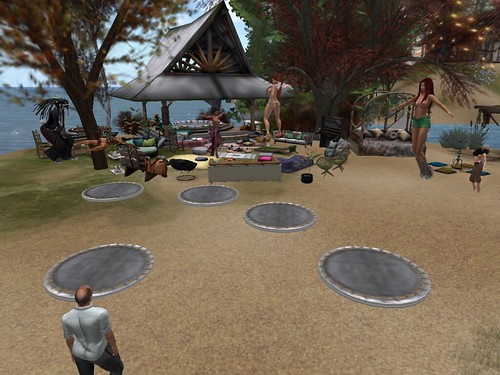He theory of planned behaviour mediate the effects of age, gender and multidimensional well being locus of manage? Brit J Overall health Psych. 2002;7:299-316. 21. Sarker AR, Mahumud RA, Sultana M, Ahmed S, Ahmed W, Khan JA. The effect of age and sex on healthcare expenditure of households in Bangladesh. Springerplus. 2014;3(1):435. http://www.pubmedcentral.nih.gov/articlerender.fcgi?artid=4153877 tool=pmcentrez renderty pe=abstract. Accessed October 21, 2014. 22. Rahman A, Rahman M. Sickness and therapy: a circumstance analysis amongst the garments workers. Anwer Khan Mod Med Coll J. 2013;4(1):10-14. 23. Helman CG. Culture, Wellness and Illness: Cultural Elements in Epidemiology (3rd ed.). Oxford, UK: ButterworthHeinemann. 1995;101-145. 24. Chrisman N. The well being searching for course of action: an method to the natural history of illness. Cult Med Psychiatry. 1977;1:351-377. 25. Ahmed SM, Adams AM, Chowdhury M, Bhuiya A. Gender, socioeconomic development and health-seeking behaviour in Bangladesh. Soc Sci Med. 2000;51:361-371. 26. Ahmed SM, Tomson G, Petzold M, Kabir ZN. Socioeconomic status overrides age and gender in determining health-seeking behaviour in rural Bangladesh. Bull World Overall health Organ. 2005;83:109-117. 27. Larson CP, Saha UR, Islam R, Roy N. Childhood diarrhoea management practices in Bangladesh: private sector dominance and continued inequities in care. Int J  Epidemiol. 2006;35:1430-1439. 28. Sarker AR, Islam Z, Khan IA, et al. Estimating the price of cholera-vaccine delivery in the societal point of view: a case of introduction of cholera vaccine in Bangladesh. Vaccine. 2015;33:4916-4921. 29. Nasrin D, Wu Y, Blackwelder WC, et al. Wellness care seeking for childhood diarrhea in establishing countries: evidence from seven websites in Africa and Asia. Am a0023781 J Trop Med Hyg. 2013;89(1, suppl):3-12. 30. Das SK, Nasrin D, Ahmed S, et al. Health care-seeking behavior for childhood diarrhea in Mirzapur, rural Bangladesh. Am J Trop Med Hyg. 2013;89(suppl 1): 62-68.A significant part of each day human behavior consists of creating decisions. When making these decisions, individuals often rely on what motivates them most. Accordingly, human behavior normally order PNPP originates from an action srep39151 selection procedure that requires into account no matter if the effects resulting from actions match with people’s motives (Bindra, 1974; Deci Ryan, 2000; Locke Latham, 2002; McClelland, 1985). Even though men and women can explicitly report on what motivates them, these explicit reports inform only half the story, as there also exist implicit motives of which individuals are themselves unaware (McClelland, Koestner, Weinberger, 1989). These implicit motives have already been defined as people’s non-conscious motivational dispositions that orient, select and energize spontaneous behavior (McClelland, 1987). Frequently, 3 distinct motives are distinguished: the require for affiliation, achievement or power. These motives have been discovered to predict several unique kinds of behavior, for instance social interaction fre?quency (Wegner, Bohnacker, Mempel, Teubel, Schuler, 2014), process efficiency (Brunstein Maier, 2005), and ?emotion detection (Donhauser, Rosch, Schultheiss, 2015). In spite of the fact that numerous research have indicated that implicit motives can direct and handle people today in performing a variety of behaviors, little is recognized in regards to the mechanisms through which implicit motives come to predict the behaviors men and women pick out to execute. The aim with the current write-up is always to supply a very first attempt at elucidating this relationship.
Epidemiol. 2006;35:1430-1439. 28. Sarker AR, Islam Z, Khan IA, et al. Estimating the price of cholera-vaccine delivery in the societal point of view: a case of introduction of cholera vaccine in Bangladesh. Vaccine. 2015;33:4916-4921. 29. Nasrin D, Wu Y, Blackwelder WC, et al. Wellness care seeking for childhood diarrhea in establishing countries: evidence from seven websites in Africa and Asia. Am a0023781 J Trop Med Hyg. 2013;89(1, suppl):3-12. 30. Das SK, Nasrin D, Ahmed S, et al. Health care-seeking behavior for childhood diarrhea in Mirzapur, rural Bangladesh. Am J Trop Med Hyg. 2013;89(suppl 1): 62-68.A significant part of each day human behavior consists of creating decisions. When making these decisions, individuals often rely on what motivates them most. Accordingly, human behavior normally order PNPP originates from an action srep39151 selection procedure that requires into account no matter if the effects resulting from actions match with people’s motives (Bindra, 1974; Deci Ryan, 2000; Locke Latham, 2002; McClelland, 1985). Even though men and women can explicitly report on what motivates them, these explicit reports inform only half the story, as there also exist implicit motives of which individuals are themselves unaware (McClelland, Koestner, Weinberger, 1989). These implicit motives have already been defined as people’s non-conscious motivational dispositions that orient, select and energize spontaneous behavior (McClelland, 1987). Frequently, 3 distinct motives are distinguished: the require for affiliation, achievement or power. These motives have been discovered to predict several unique kinds of behavior, for instance social interaction fre?quency (Wegner, Bohnacker, Mempel, Teubel, Schuler, 2014), process efficiency (Brunstein Maier, 2005), and ?emotion detection (Donhauser, Rosch, Schultheiss, 2015). In spite of the fact that numerous research have indicated that implicit motives can direct and handle people today in performing a variety of behaviors, little is recognized in regards to the mechanisms through which implicit motives come to predict the behaviors men and women pick out to execute. The aim with the current write-up is always to supply a very first attempt at elucidating this relationship.
